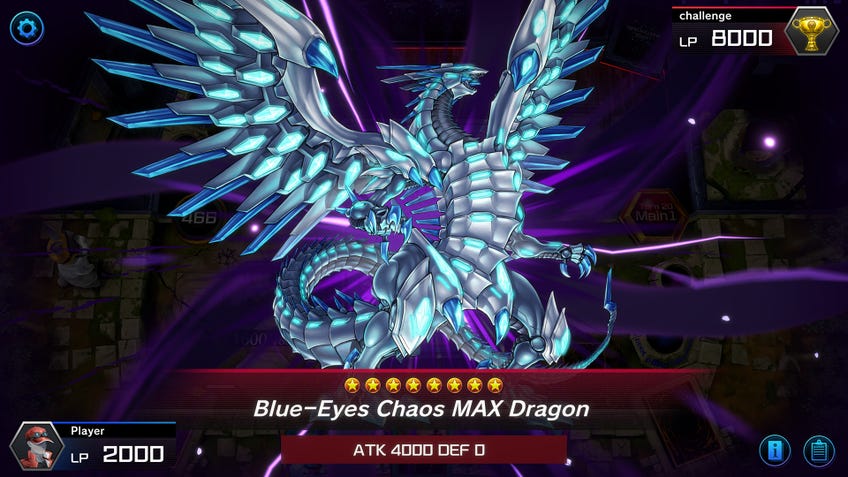Yu-Gi-Oh! Master Duel: The best starter deck to choose for beginners
Pick up your first starter deck, unlock structure decks and find out how to get more cards in our guide to Yu-Gi-Oh!’s latest digital offering.
Yu-Gi-Oh! Master Duel has now surpassed over 10 million downloads, which means there are quite a lot of new and existing players returning to Konami’s trading card game.
With the PC, console and mobile app now offering players a wide variety of different playing styles, choosing the best Yu-Gi-Oh! Master Duel starter deck for beginners can be a confusing web of card metas, playstyles and mechanics that can very quickly leave you feeling like a third-rate duelist with a fourth-rate deck.
To help you get started, this guide to the best starter decks in Yu-Gi-Oh! Master Duel will help you understand how to acquire your first starter deck in Master Duel and which Master Duel starter deck is best for beginners, as well as how to acquire gems in Master Duel, how to unlock secret packs in Master Duel and believe in the heart of the cards.
Best starter decks in Yu-Gi-Oh! Master Duel
- How to get your first Starter Deck in Yu-Gi-Oh! Master Duel
- What's the difference between a starter deck and a structure deck?
- What’s the best starter deck to choose in Yu-Gi-Oh! Master Duel?
- How to unlock more structure decks in Yu-Gi-Oh! Master Duel
- How to get more cards in Yu-Gi-Oh! Master Duel
- How to unlock secret packs in Yu-Gi-Oh! Master Duel
How to get your first Starter Deck in Yu-Gi-Oh! Master Duel
When you boot into Master Duel for the very first time, the game will give you a whistle-stop tour through all the various playstyles and deck builds one might expect when playing Yu-Gi-Oh! You will get a taste of more traditional formats, like Ritual and Fusion summoning, right through to the game’s most recent inclusion, Link summoning. These tutorials are brief but will explain how to play Yu-Gi-Oh!, including how to summon, special summon, attack, defend and win a duel.
By the end, you’re given the aptly named “Starter Deck” to use in a game against the CPU. Once you win that (which won’t be hard, the CPU pulls its punches) you will have completed the tutorial and have the chance to pick your very first structure deck.
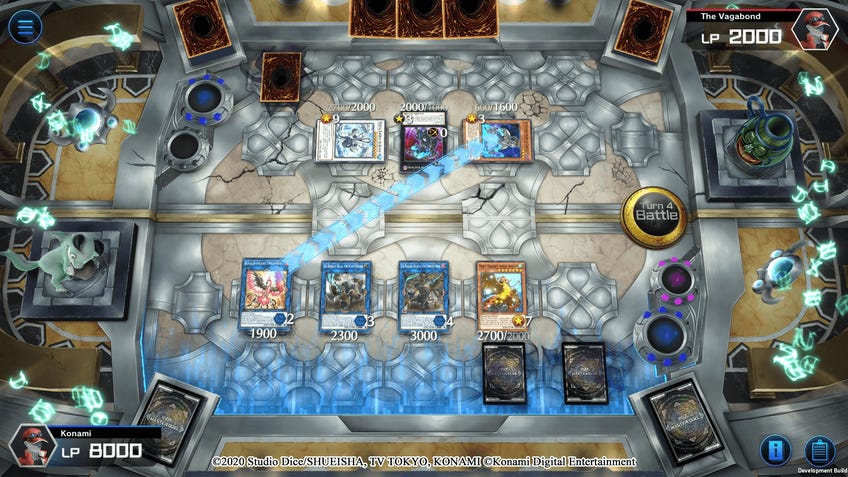
What's the difference between a starter deck and a structure deck?
The starter deck is the very first deck that Yu-Gi-Oh! Master Duel gives you. It allows you to start duelling early on with cards that fundamentally work. However, there isn’t a clear and obvious foundation from which to build this deck out.
Structure decks, on the other hand, give players the basis of a deck that plays around either a mechanic or an all-powerful monster. These decks are a great framework, but that’s exactly what they are - a framework. If you’re looking to actually compete against other people in Master Duel’s online Ranked mode, all of these decks will need to be supplemented with better cards (which we will explain how to acquire later).
What’s the best starter deck to choose in Yu-Gi-Oh! Master Duel?
The three structure decks you are allowed to choose in Yu-Gi-Oh! Master Duel offer three varying playing styles for beginners. Each one has its own strengths and weaknesses, with some being a lot more approachable than others.
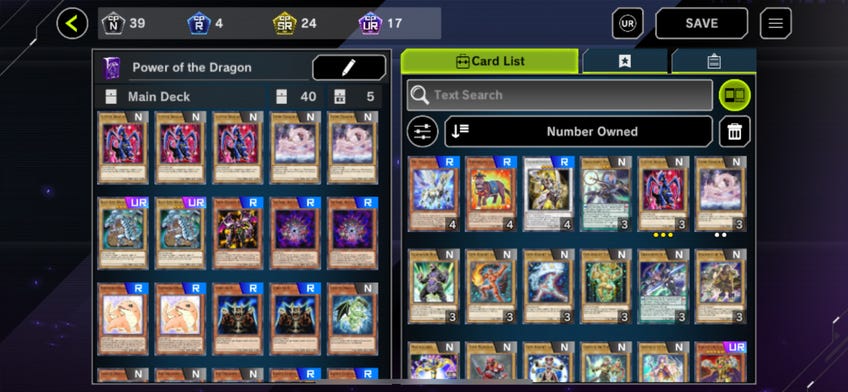
Power of the Dragon
What does the deck do?
Power of the Dragon, as you would expect from the title, is all about dragons. The overall goal with this structure deck is to get big monsters on the field as quickly as possible to overwhelm your enemy with astronomical power, with the aim of using Fusion summoning to unleash the terrifying Five-Headed Dragon onto the field. This deck also features the famous fan-favourite card, Blue-Eyes White Dragon.
What is it good at?
This structure deck is best at being intimidatingly powerful. Chaining cards like Lord Of D., which will protect your dragons from enemy attacks, with spell cards like The Flute of Summoning Dragons to special summon two dragons from your hand will quickly stack your field with powerful dragons like Blue-Eyes White Dragon. Apply the spell Rush Recklessly for an extra 700 attack points and your dragons will be ready to unleash carnage. You can protect them with traps like Threatening Roar, which will deny your opponent an attack round that turn if you have failed to summon some of the more powerful cards in this deck.
What is it bad at?
Its key card, Five-Headed Dragon, requires five dragon monsters to fuse it together, which is by no means impossible but is a very steep price to pay for a fusion monster compared to other fusion decks out there. The deck as a whole is also a bit of a blunt instrument compared to some of the more elegant decks available, requiring a fairly decent amount of luck to summon monsters at a competitive rate. Any opponent’s deck that can limit the amount of special summons you can make, or can counter the spells and card effects needed to summon the number of dragons needed to make the power advantage worth it, will leave you stranded with few options.
Is Power of the Dragon a good starter deck for beginners?
Power of the Dragon is a good structure deck for people very new to Yu-Gi-Oh!, both as a franchise and mechanically. Fusion summons are one of the simpler mechanics in the game, only requiring the right card names and the spell card Fusion Substitute to summon the monsters you need. There aren’t any major monster effect chains to worry about and the normal summon monsters are pretty strong across the board, making it an easy deck to use to start understanding how chaining effects can work. Plus, dragons are really cool.

Synchro of Unity
What does the deck do?
Unlike Power of the Dragon, summoning the most powerful cards from this structure deck does not require the use of a spell card. Synchro summoning requires making sure the cards you are sacrificing for the summon match the level rating of the desired card (to summon a level 8 Synchro monster you would need to tribute two cards whose levels equal 8, for example), and one is labelled as a “tuner” card. Synchro cards often have additional effects which are triggered throughout various phases of a turn - with often devastating effects for your opponent. With Nitro Warrior, for example, activating a spell card gives the card an extra 1000 attack points during your damage phase.
What is it good at?
Synchro of Unity is very good when chaining card effects together to get those Synchro cards on the field as quickly as possible. Say it’s turn two and you have a Nitro Synchron in your graveyard. You could normal summon a Junk Synchron, which allows you to special summon a level 2 or lower card, like Nitro Synchron, from your graveyard onto the field. Then tribute Junk Synchron to summon Turret Warrior from your hand. At this point you have the right conditions to Synchro summon Nitro Warrior. When this happens, the tributed Nitro Synchron’s effect will be triggered, allowing you to draw a card. That could give you the ability to cast the spell Synchro Blast Wave, destroying an opponent’s monster and gives Nitro Warrior 1000 extra attack points. Deadly stuff.
What is it bad at?
The key factor making Synchro decks tricky to pull off is that unlike fusion decks where cards can be tributed from your hand provided you have the appropriate fusion spell card, all synchro tribute cards have to be summoned to the field to be eligible. Though Synchro of Unity does possess some decent spell and trap cards to protect your field, such as Mystical Space Typhoon, there isn’t a lot else protecting your weaker summons. This deck is also currently set up in a way where most of the summon chains happen from the graveyard, which would be fine if the deck was stacked with cards that allow you to send monsters to the graveyard, such as spell card Foolish Burial, but in its raw state, Synchro of Unity is too slow at getting its most powerful cards onto the field.
Is Synchro of Unity a good starter deck for beginners?
Though Synchro of Unity definitely needs some work to be optimal, there are still some frameworks in its raw form that can lead to some interesting card chains. If you’re someone who is familiar with Yu-Gi-Oh!, this deck won’t present too much of a challenge, but will also stimulate that curious, tricksy part of the brain that Power of the Dragon simply doesn’t do with its “hit field with big dragon” mentality.
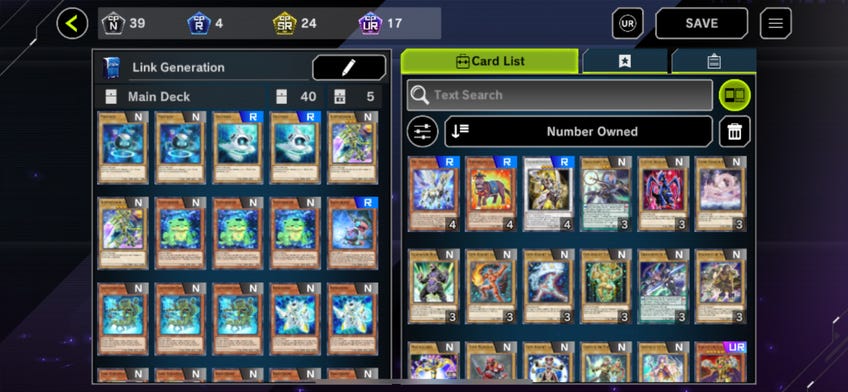
Link Generation
What does the deck do?
Link Generation is a structure deck built around Yu-Gi-Oh!’s newest summoning mechanic - the Link summon. Unlike Synchro summoning, there isn’t a level requirement to summoning a link monster, just a tribute requirement, which is usually something simple like “one normal monster”. Link monsters are the gateway to some of the most powerful combinations currently in the Yu-Gi-Oh! meta, with card effects that can range from summoning more monsters to downright shutting down enemy abilities and wiping them off of the field.
What is it good at?
In its base form, Link Generation is excellent at generating monsters onto the field quickly. For example, you could normal summon Link Streamer to the field. Then, using Bitrooper’s special summon effect, send one level 2 or lower card from your hand to the graveyard and summon Bitrooper. This will trigger Link Streamer’s effect and summon a data token to the field. You could then tribute Link Streamer and Bitrooper to link summon Decode Talker. If the enemy activates an effect card to counter, tribute the data token and destroy the effect card entirely. Alternatively, you could simply bait the enemy to attack with a seemingly weak Texchanger, only to bamboozle them with that card’s effect and summon a level 8 Suppression Collider without tributing anything at all.
What is it bad at?
The thing about Link monsters is that they are not going to be leading the charge offensively. Though Decode Talker has a healthy 2300 attack points and the ability to generate more, it’s much more useful for its effect negation skills than as a damage dealer. Link Generation does have some more tanky cards, like Suppression Collider, but by and large Link Generation offers by far the least offensively compared to the other two options. Though the deck does come with some buff spells like Blustering Winds and Cynet Universe, getting these onto the field requires the luck of the pullover skill.
Is Link Generation a good starter deck for beginners?
Link Generation isn’t recommended as your first Master Duel structure deck, especially if you are new to Yu-Gi-Oh! as a whole. Link Generation is an excellent idea of a deck, but in its current form, it just lacks cutting power. Link summoning is at its best when it works in tandem with other systems like Fusion and Synchro. This deck needs a lot of work before it can become viable in a competitive setting.
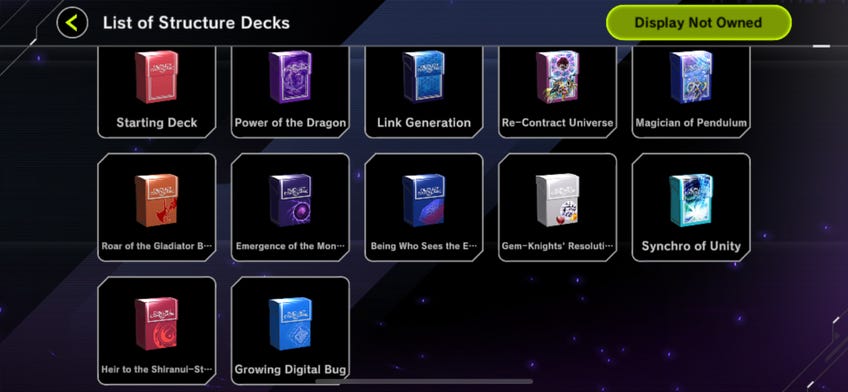
How to unlock more structure decks in Yu-Gi-Oh! Master Duel
Though choosing your first Master Duel structure deck is exciting, there is no need to worry about not ever gaining access to the other two you left behind. More structure decks are available to unlock by completing chapters of Master Duel’s solo mode. This is highly recommended, as it will also give you access to other, even more exciting structure decks.
Solo mode is an incredibly charming look through the history and lore behind some of Yu-Gi-Oh!’s most iconic card collections, and will give you more tutorials in various mechanics you can employ to take down your enemy. Each module consists of some lore, a tutorial and a series of duels that will reward you with cards and other items. There are additional challenges after you unlock each deck that will reward you with gems - something that’s strongly recommended as these gems are the pathway to upgrading your structure decks.
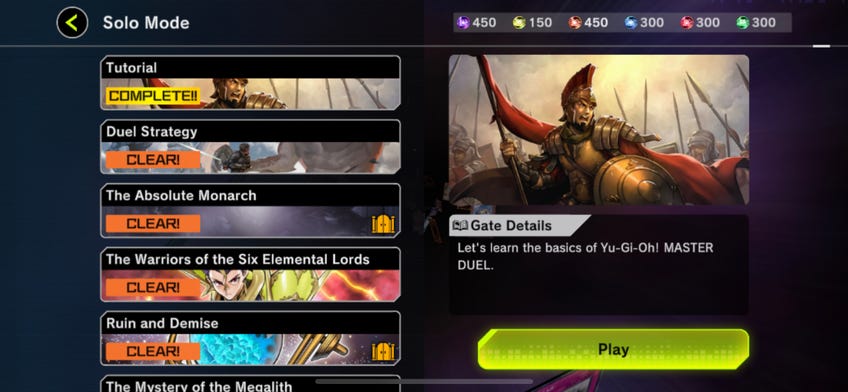
How to get more cards in Yu-Gi-Oh! Master Duel
The best way to get more cards in Yu-Gi-Oh! Master Duel is by purchasing card packs. This is done by spending gems.
This being a free-to-play game, you can of course throw real-world money at Master Duel and buy all the gems your heart desires. The good news is, especially in the initial few hours of playing, Master Duel will throw gems at you like it’s going out of fashion, giving you more than enough to purchase some extra packs of cards. By the time I had completed the tutorial and some solo mode games, I had well over 6000 gems to play with.
The first thing you should purchase with your gems is the Gold Duel Pass for 600 gems. It works like any other battle pass in that you level up and get additional goodies, including gems and points that can be used to craft specific cards later on.

When it comes to purchasing packs of cards, we recommend first spending 750 gems on the Ash Blossom & Joyous Spring bundle. This will give you 10 packs of cards from across all the various card sets available in Master Duel, as well as the card Ash Blossom & Joyous Spring - aka the most annoying negate-effect card in the whole game.
How to unlock secret packs in Yu-Gi-Oh! Master Duel
Buying card packs from the Yu-Gi-Oh! Master Duel store will, in turn, unlock packs called “secret packs”. Secret packs are time-limited booster packs that increase the chances of pulling specific cards from a set; Toon World packs will favour “toon” cards, Shifting Gears packs will result in more “gadget” cards and so on. Secret packs are the secret to making your structure decks more viable or making something completely new to fit your preferred play style.
